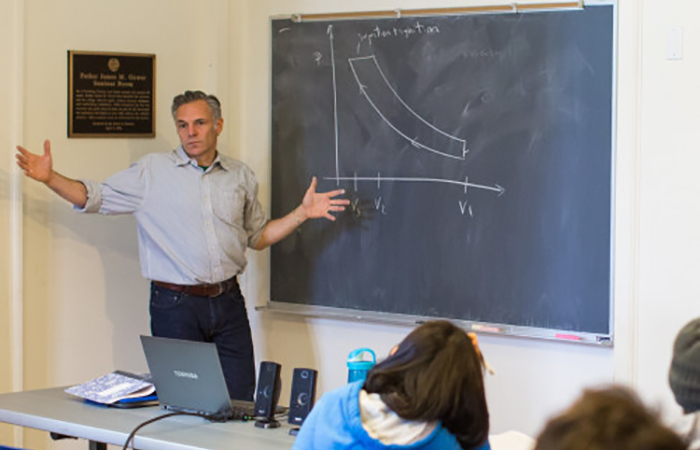We often try to interview change agents in the entrepreneurial ecosystem and some of them work right here at Introspective Systems. Trevor is more than just “wicked smart” he’s kind of a Renaissance man. Read our interview and we think you’ll agree.
Trevor is a former Fulbright Graduate Scholar and a Masters graduate in Mathematics from the University of Maine, Orono with extensive experience in mathematical modeling using High-Performance Computers. At Introspective systems, he manages the technical arm of the company and is responsible for scientific algorithm development in diverse market sectors. His thesis, Improvements to Data Assimilation Strategies in Forestry, involved the simulation and analysis of biomass growth rates in the Maine North Woods using a combination of growth and weather models data collected through the United States Department of Agriculture and the Forest Inventory Analysis program.
What drew you to work at Introspective Systems and what’s involved in your job?
The two draws that brought me to Introspective Systems were the socially impactful work being done as well as the tools being developed to do it. I was onboarded just as the company began working on our Phase I SBIR project through the DOE. Continued work with the USGS also motivated the decision. xGraph, the company’s software framework, and the platform developed under its guise showed remarkable extensibility, flexibility, and capability in the face of these daunting software challenges.
My job is focused on supporting a team capable of delivering technology that is practical serviceable, and agile while aligning it with our founder’s vision of a software future that is available anywhere (distributed), accessible to all (simple to engage with and develop on), adaptive (self-reflective and evolving), and scalable (no problem is too large, complex, or dynamic).
Technology is ever evolving – what do you think is the most exciting development for today’s tech professionals?
From my perspective, tools available to tech professionals are the most exciting development. Tools such as our own xGraph, allow individuals and companies to provide value-driving solutions and software faster, with less code duplication and debugging/audit time, in both development and deployment.
Can you describe the work you did as a Fulbright Scholar?
Due to technical and social requirements, much of my time in Ca Mau, Vietnam was supporting students, professionals, educators, and government officials with tools for learning basic English. However, my passion and the course I was most excited about was focused on passive solar and in particular transferring the knowledge gained and work being done through the DOE’s Sunshot Initiative to this Vietnamese community. Following some initial language instruction, I exhibited to the class how to create a parabolic lens using a cup of water, plastic wrap, some wire, and a metal coat hanger. We then used this collector to concentrate solar energy for heating water or even cooking. We continued to develop two other solar thermal systems using a parabolic-shaped reflective metal sheet, as well as black painted domestic water tubing. These systems exhibited how passive solar resources could be used to those with even the most meager resources.
Thinking about your own thesis work in Forestry, what are some interesting ways that modeling and simulation projects could be applied to other challenges of natural resource management?
My thesis for a master degree in mathematics was an application of one particular data assimilation strategies as it applies to forestry and forest modeling. Modeling and simulation can be and is applied to nearly all business sectors and particularly natural resource management. Expanding the modeling and simulation capabilities currently in place by using a robust, decentralized, and extensible software tool such as xGraph, can allow for agent-based models that more accurately represent the system being studied. A couple of interesting studies include looking at runoff and waste-water management, large-scale ecosystem models, and epidemiology models.
Is it true that you use the xGraph platform to manage your greenhouse?
Yes! xGraph runs my greenhouse. From humidity control to lighting and irrigation, xGraph software modules are in control.



